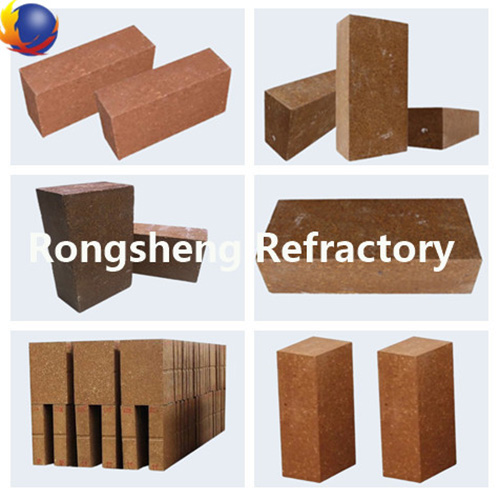Innovative Uses of Alkaline Magnesia Refractory Bricks in the Renewable Energy Sector
Alkaline magnesia refractory bricks play a pivotal role in the renewable energy sector, becoming indispensable due to their exceptional properties. As the world increasingly shifts towards cleaner energy sources like solar, wind, biomass, and hydrogen, the demand for high-performance materials that can withstand extreme conditions grows. Alkaline magnesia refractory bricks, with their superior high-temperature stability, erosion resistance, and thermal conductivity, are crucial in this transition.
Understanding Alkaline Magnesia Refractory Bricks
Alkaline magnesia refractory bricks are composed mainly of magnesium oxide (MgO) and other alkaline oxides such as calcium oxide (CaO) and silicon dioxide (SiO₂). These bricks are known for their outstanding high-temperature resistance and durability, making them ideal for various industrial applications. Depending on their chemical composition and physical properties, these bricks can be classified into several types, including ordinary alkaline magnesia refractory bricks, magnesia-alumina refractory bricks, and magnesia-iron refractory bricks. Each type serves specific purposes, with ordinary bricks being cost-effective for general industrial furnaces and magnesia-alumina bricks providing enhanced erosion resistance for high-temperature equipment in the metallurgical industry.

Advantages of Alkaline Magnesia Refractory Bricks
High-Temperature Stability One of the most significant advantages of alkaline magnesia refractory bricks is their high-temperature stability. This property ensures that the bricks maintain structural integrity and performance in extreme heat environments, essential for applications in solar thermal power systems. In these systems, components like concentrators need materials that can endure intense solar heat without deforming or breaking, and alkaline magnesia bricks meet these requirements efficiently.
Erosion Resistance Alkaline magnesia refractory bricks exhibit excellent erosion resistance, maintaining their chemical and physical stability even when exposed to corrosive media. The magnesia content in these bricks neutralizes acidic substances, reducing wear and prolonging the material’s lifespan. This resistance is particularly beneficial in renewable energy applications where materials frequently encounter harsh conditions, such as in biomass energy production or hydrogen fuel cells.
Thermal Conductivity The superior thermal conductivity of alkaline magnesia refractory bricks enhances energy transfer efficiency in high-temperature applications. In solar thermal systems, for example, these bricks facilitate the rapid transfer of concentrated solar energy to heat transfer fluids, optimizing the overall efficiency of the system. Similarly, in wind energy applications, they help maintain stable temperatures within the turbine’s high-temperature components, improving operational efficiency and longevity.
Applications in Renewable Energy
Solar Thermal Power In solar thermal power plants, alkaline magnesia refractory bricks are used in critical components such as concentrators and reflectors. Their ability to withstand prolonged exposure to high temperatures ensures the reliability and efficiency of solar energy conversion systems.
Wind Energy Wind turbines, particularly those operating in high-temperature environments, benefit from the use of alkaline magnesia refractory bricks. These bricks are used in heat exchangers and exhaust ducts, where their thermal stability and conductivity are crucial for maintaining optimal performance.
Hydrogen Production In the hydrogen energy sector, alkaline magnesia refractory bricks are essential for constructing high-temperature reactors used in steam methane reforming and other hydrogen production processes. Their resistance to high temperatures and corrosive gases ensures the durability and efficiency of hydrogen production systems.
Biomass Energy Alkaline magnesia refractory bricks are extensively used in biomass energy production, particularly in combustion and gasification systems. They form the lining of boilers and reactors, where their high-temperature stability and erosion resistance are vital for efficient and reliable energy conversion from biomass materials.
Future Trends and Innovations
As the renewable energy sector continues to evolve, the demand for advanced materials like alkaline magnesia refractory bricks will grow. Innovations in material science and manufacturing processes will likely lead to the development of even more efficient and durable refractory bricks, further enhancing the performance of renewable energy systems. Embracing these advancements and investing in high-quality refractory materials will be crucial for companies aiming to stay competitive in the rapidly expanding renewable energy market.
Conclusion
Alkaline magnesia refractory bricks are integral to the advancement of renewable energy technologies. Their unique properties make them suitable for a wide range of high-temperature applications, from solar thermal power and wind energy to hydrogen production and biomass energy. By leveraging the benefits of these refractory bricks, renewable energy systems can achieve higher efficiency, durability, and overall performance. For companies in the renewable energy sector, adopting alkaline magnesia refractory bricks is a strategic move that promises long-term benefits and a competitive edge in a growing market.
Contact Us for Inquiries
For more information on our high-quality alkaline magnesia refractory bricks and how they can enhance your renewable energy projects, please reach out to us. We are committed to providing innovative solutions tailored to your specific needs. Contact us at:
Tel/Whatsapp: +86-13903810769
Электронная почта: inquiry@rsrefractorychina.com
We look forward to assisting you with your refractory material requirements and contributing to the success of your renewable energy endeavors.
